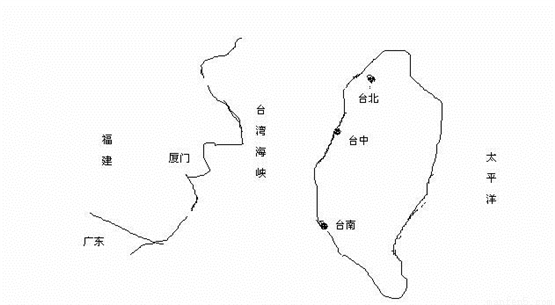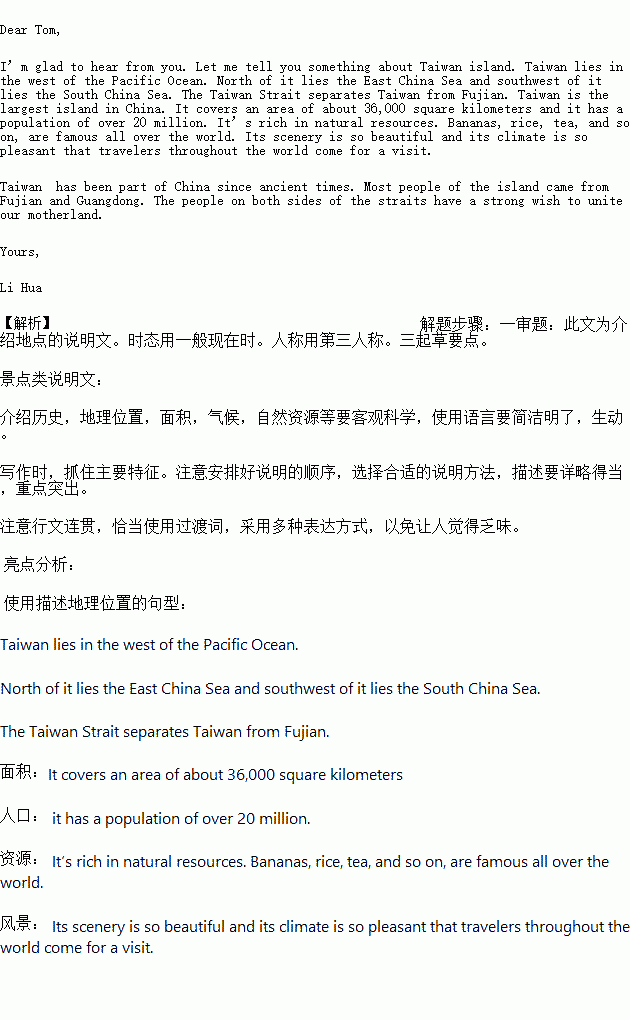̀âÄ¿ÄÚÈƯ
ÄăÊÇÀ£¬ÄăµÄÓ¢¹úÅóÓÑTomÏëÈ¥̀¨ÍåÂĂÓΣ¬Çë¸ù¾ƯÏÂĂæµØͼºÍ̀áʾÓĂÓ¢ÓïĐ´̉»Æª½éÉǛ¨ÍåÇé¿öµÄ¶̀ÎÄ£¬´ÊÊư100×óÓ̉¡£

1. ̀¨ÍåµÄµØÀíλÖĂ£»£¨¼ûͼ£©
2. ̀¨ÍåÊÇÖĐ¹ú×î´óµÄµºÓ́£¬Ăæ»ưÔ¼36£¬000ƽ·½¹«ÀÈË¿Ú2£¬000¶àỊ́£»
3£®×ÔÈ»×ÊÔ´·á¸»£¬Ïă½¶£¬µ¾Ă×£¬²è̉¶µÈ²úÆ·³ÛĂûÖĐÍ⣻
4. ·ç¾°ÓÅĂÀ£¬Æøº̣̉ËÈË£¬ÊÀ½ç¸÷µØµÄÓοͷ×ÖÁí³À´£»
5. ̀¨Íå×Ô¹Å̉ÔÀ´¾ÍÊÇÖĐ¹úÁ́ÍÁµÄ̉»²¿·Ö¡£µºÄÚ¾ø´ó¶àÊư¾ÓĂñÀ´×Ô¸£½¨£¬¹ă¶«¡£º£Ï¿Á½°¶ÈËĂñ¶¼ÓĐͳ̉»×æ¹úµÄÇ¿Á̉Ô¸Íû
²Î¿¼´Ê»ă£º¹Å´úµÄ ancient times ÖĐ¹úÄϺ£ South China Sea ̀¨Í庣Ͽ the Taiwan Strait ͳ̉» unite
Dear Tom£º
I¡¯m glad to hear from you. Let me tell you something about Taiwan island.
____________________________________________________________________________________________
____________________________________________________________________________________________
____________________________________________________________________________________________
____________________________________________________________________________________________
____________________________________________________________________________________________
____________________________________________________________________________________________
____________________________________________________________________________________________
_______________________________________________________________________________

